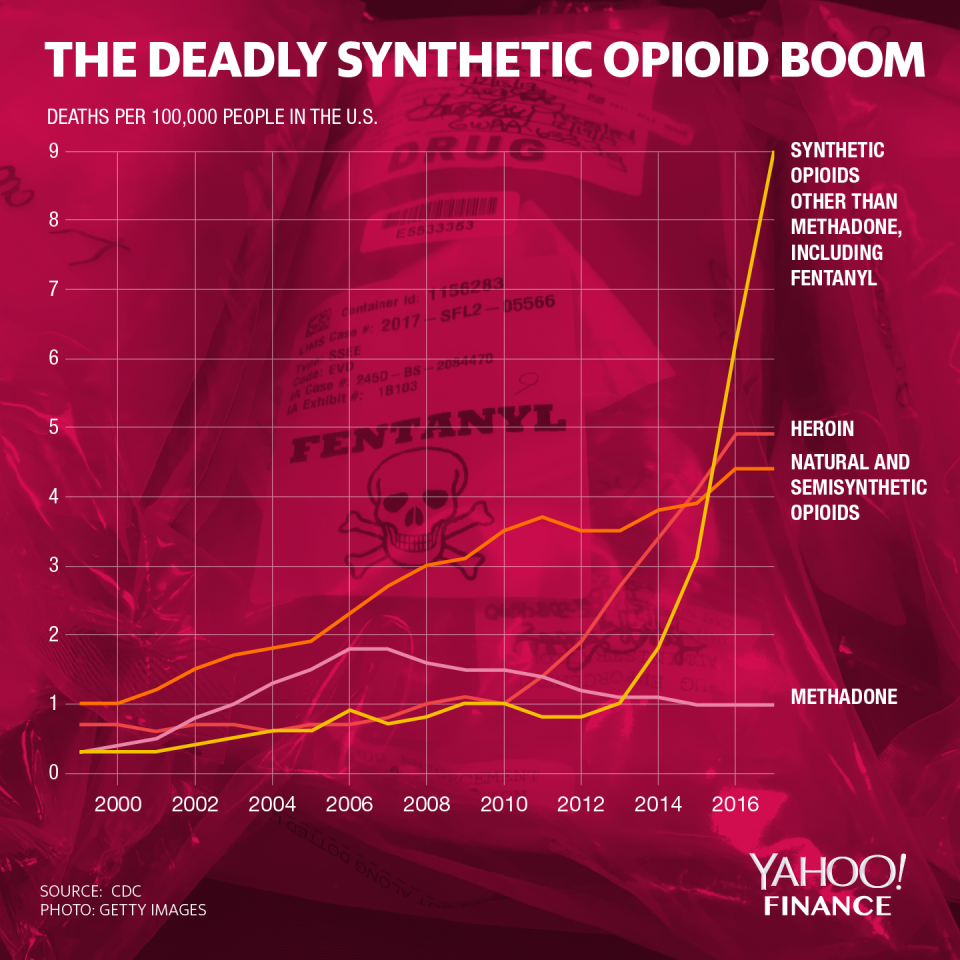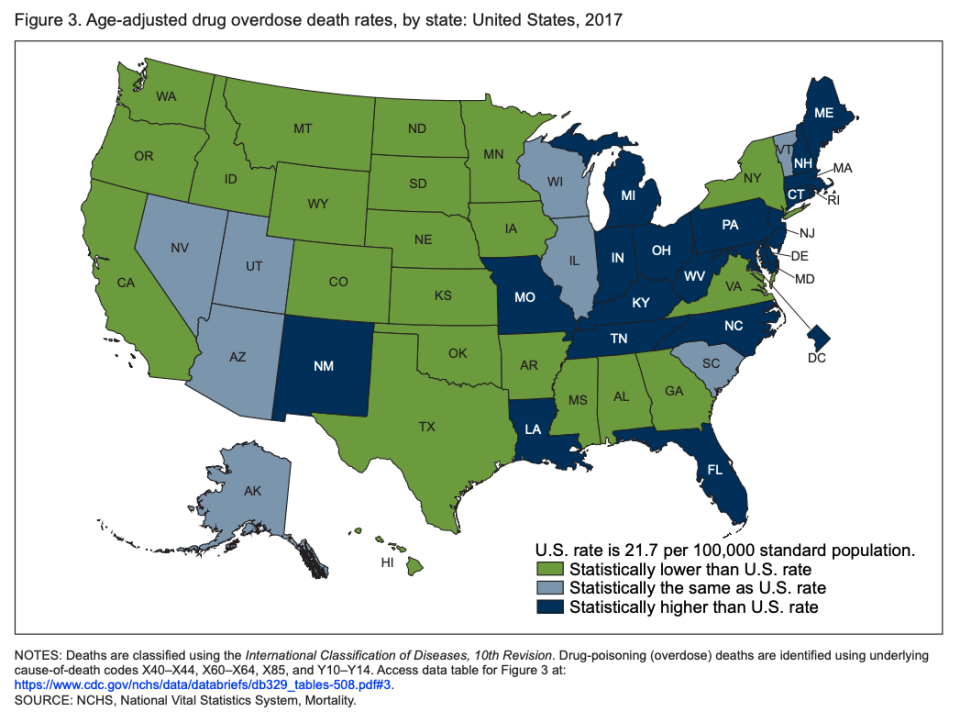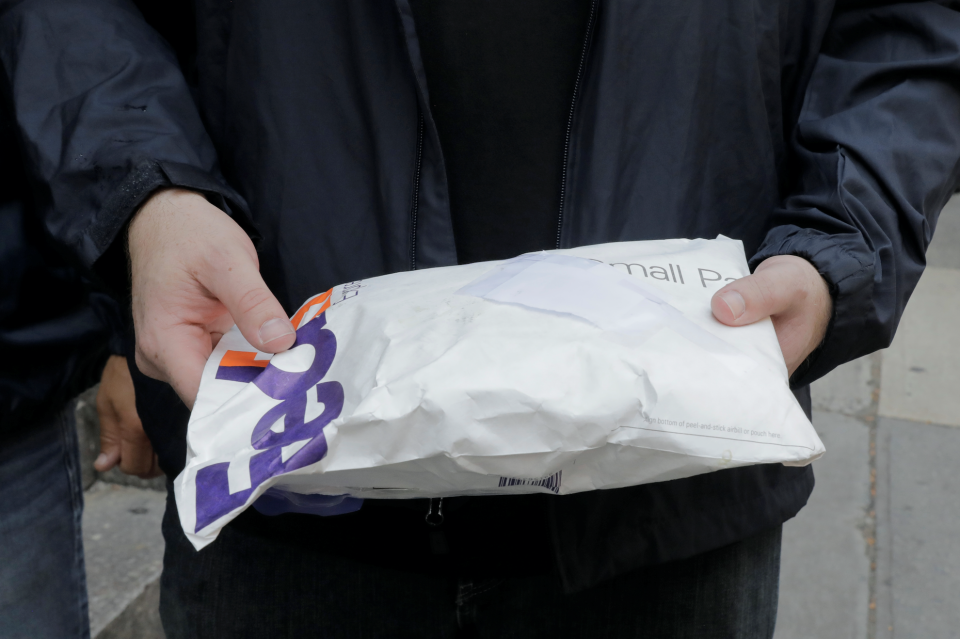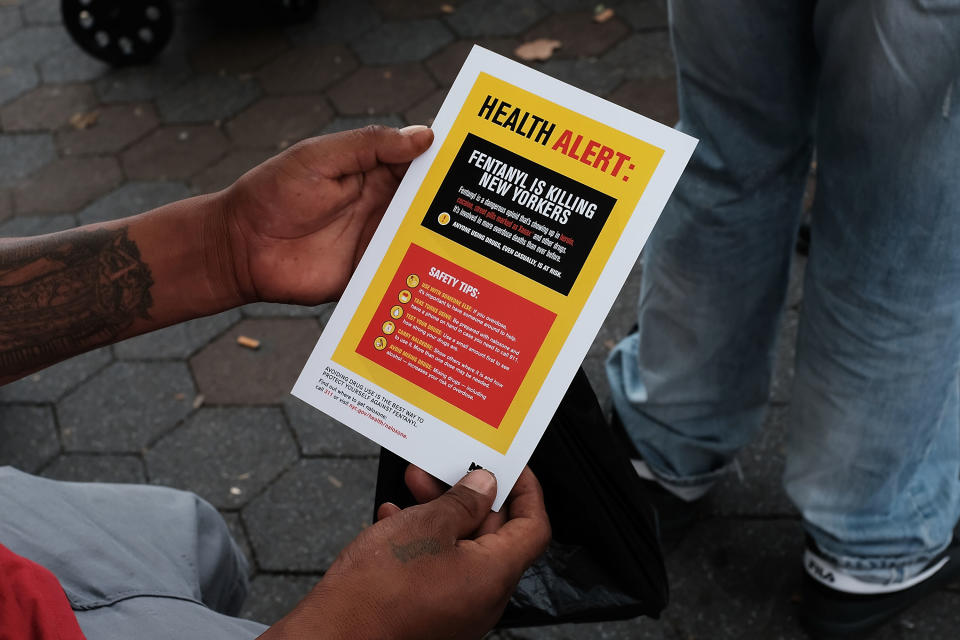Expert: Here's 1 clear way to fight the fentanyl epidemic
Synthetic opioid overdose deaths, particularly from fentanyl, have risen exponentially since 1999. Just within the span of a year, the rate jumped 45% in 2017, making fentanyl and other synthetic opioids as the deadliest drugs in America.
And while there is no clear answer as to how fentanyl addiction has become so rampant, experts have pinpointed some of the root causes — such as suppliers from China and Mexico and the quick spread of information these days.
“This phenomenon, a lot of it is internet driven,” Bryce Pardo, an associate policy researcher at the RAND Corporation, told Yahoo Finance. “A lot of it is because of the potency of the substances.” (Fentanyl can be 40 to 50 times stronger than regular street heroin.)
Fighting the epidemic, according to Pardo, starts with doing one thing better: data collection.

“The overdose death data is coming in two years after the overdoses have occurred,” Pardo said. “So, we really do not know what’s going on in these markets today. We don’t know what’s happening right now in Ohio, kind of ground zero.”
Using 2017 data, a data brief from the National Center for Health Statistics (NCHS) found that there were 70,237 overdose deaths in the U.S. that year. Additionally, the age-adjusted rate of these deaths jumped 9.6% from 2016.
‘It may be worse than 2018 or 2017’
Over the last two years, fentanyl has dominated the drug scene while researchers are left largely in the dark.
“I don’t know what the overdose deaths are going to look like for 2019,” Pardo said. “It may be worse than 2018 or 2017. But that’s a problem. We need to figure out how to reduce these lags so that we know when a fatal overdose is occurring. We could record it, measure it properly, and then get that information to the right authorities so that they can start planning how to respond.”
One issue, Pardo explained, is that currently “we use household surveys. There are not many chronic heroin users that are the sampling frame. They’re often in and out of jail, a psychiatric facility, in treatment, living under overpasses. They’re just not getting sampled.”

‘Fentanyl is just so completely integrated into our black market’
Bridget Brennan, the special narcotics prosecutor for New York City, stated that fentanyl is now found in more than half of the drug seizures in NYC and over half of the overdose deaths.
“Fentanyl is just so completely integrated into our black market drug supply now,” Brennan told Yahoo Finance. “We see fentanyl being sold on the street by itself combined with some dilutants. Sometimes it’s combined with heroin, sometimes it’s combined with cocaine. It’s being pressed into counterfeit pills that are being sold as oxycodone, and it’s just so prevalent in our drug supply.”
And while she agreed that data collection is an important component when it comes to fighting the spread of fentanyl addiction, Brennan highlighted another: cutting off the drugs at the top of the supply chain.

China is the largest source of illicit fentanyl, according to the U.S.-China Economic and Security Review Commission (USCC), as well as fentanyl-like substances that have been increasingly imported into the U.S. in recent years. The fentanyl is often trafficked from China to the U.S. through Mexico and Canada.
“The approach of directing efforts at Chinese sources of supply, precursor chemicals for fentanyl that may be going into Mexico ... and working with Mexico to identify sources of any manufacturers of fentanyl and eliminate those illegal sources — that’s going to be tremendously helpful,” Brennan said.
There is no doubt that the government recognizes fentanyl as a problem.
In December 2018, Trump brought it to the conversation during trade negotiations with China’s President Xi Jinping in an effort for China to crack down on the production of the drug. In April 2019, it was reported that the Pentagon and the Department of Homeland Security were even considering designating fentanyl as a weapon of mass destruction.
“We need to start thinking more innovatively in terms of how to target these markets [and] how to get China to better enforce these rules and regulations on the industry so that they’re not exporting all these new substances,” Pardo said.

‘Say you’re San Francisco’
Pardo stressed that any improvements will require investment. He noted that some proposals, like Sen. Elizabeth Warren’s plan for combatting opioid addiction, did seem promising.
“From a national perspective, the federal level, there is not a lot of information until the CDC gets everything from all the states and then really analyze the problem,” Pardo said. “There might be better understanding at the individual state levels, but the federal government needs to do some work here in terms of helping the states improve their ability to help measure overdoses and reduce the lag time.”
The next steps involve doing more on a local level.
“Say you’re San Francisco and fentanyl hasn’t really hit that city yet,” Pardo said. “If you’re a politician in that city, you really need to know the size of that market. You need to know how many users there are, how many chronic users there are in order to really allocate how much Narcan [will be needed] when fentanyl arrives. What treatment provision centers do we need to open?”

He continued: “We need to improve and enhance the way we measure these populations that we know how many users are at risk [so] we can allocate the proper amount of resources to save lives as quickly as possible. That needs to be done.”
Adriana is an associate editor for Yahoo Finance. Follow her on Twitter @adrianambells.
READ MORE:
Former DEA agent on fentanyl: ‘By far, the worst drug I’ve ever seen'
'They thought they were buying heroin': How fentanyl invaded the U.S.
Fed Chair Powell: Opioid epidemic is 'a national crisis' hitting the economy
Read the latest financial and business news from Yahoo Finance
Follow Yahoo Finance on Twitter, Facebook, Instagram, Flipboard, SmartNews, LinkedIn, YouTube, and reddit.

 Yahoo Lifestyle
Yahoo Lifestyle 
